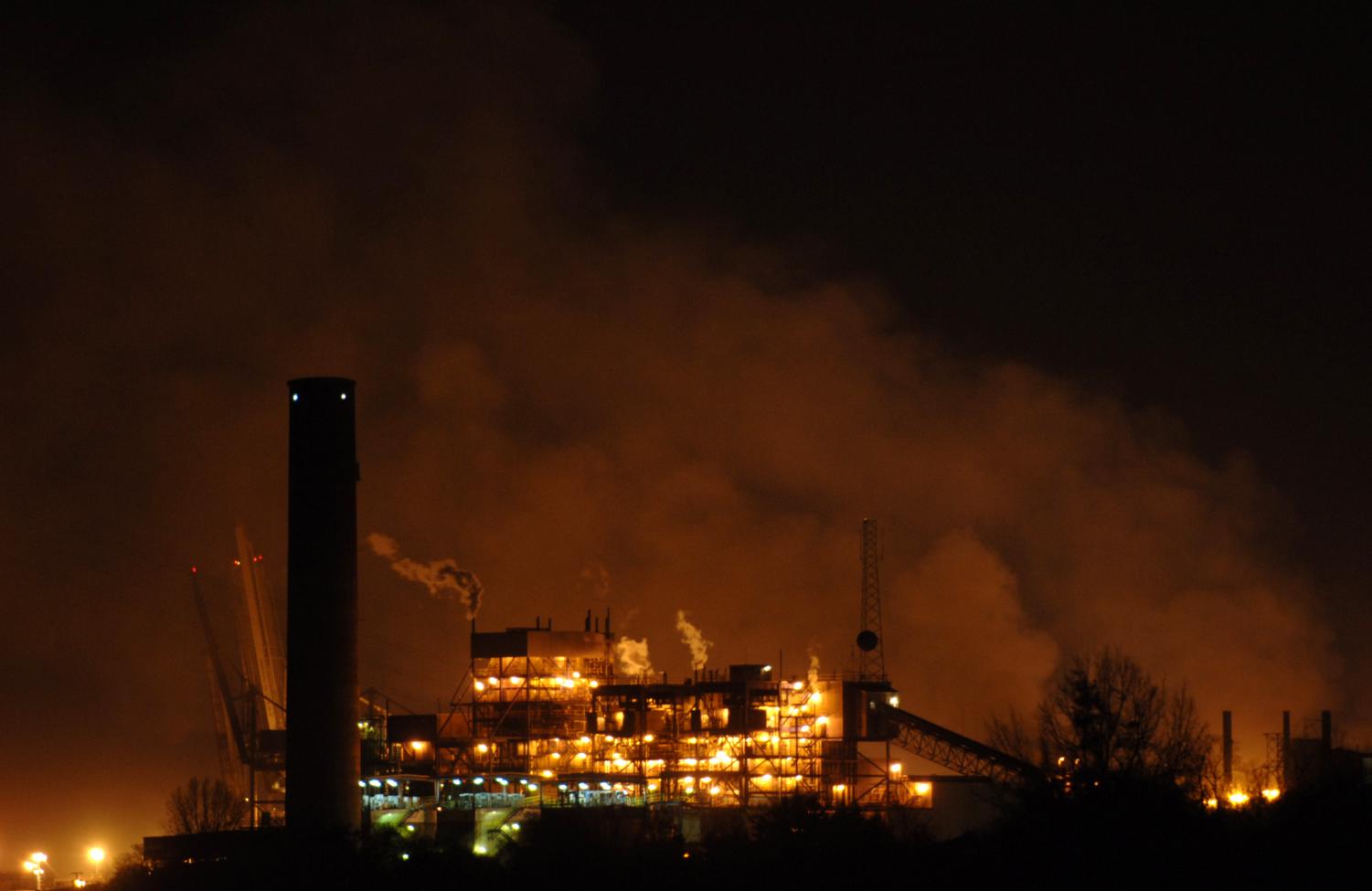Authorities searching for at least six people missing in an explosion that engulfed a sugar refinery in flames as about 100 people worked inside said Friday they expect to find some plant workers dead.
Savannah-Chatham County Police Chief Michael Berkow told families of missing workers that rescue efforts at the refinery, which continued to burn through midday Friday, had shifted to recovery operations hours after the explosion erupted late Thursday.
Firefighters continued to battle the blaze at the massive Imperial Sugar Company refinery and were still unable to safely search for the dead after the blast and fire reduced much of the plant to a mass of rubble, twisted beams and mangled metal.
Fire officials said they had begun clearing debris so they could move farther into the plant, and predicted the blaze could be extinguished by Friday afternoon.
Fire Chief Greg Long said he wasn’t giving up hope some of the missing might still be found alive in rooms blocked by debris.
”I have friends that work at this plant,” Long said. ”I don’t want to see a casualty list.”
Officials had not determined what caused the explosion Thursday night but said they suspect sugar dust, which can be volatile.
”There was fire all over the building,” said Nakishya Hill, a machine operator who escaped from the third floor of the refinery on the Savannah River.
”All I know is, I heard a loud boom and everything came down,” said Hill, who was uninjured except for blisters on her elbow. ”All I could do when I got down was take off running.”
Ninety-five to 100 people were believed to be working in that area, authorities said.
The blast was felt by residents throughout the Savannah suburb.
Police Lt. Alan Baker and his wife, Joyce, told CNN they were among the first on the scene. Alan Baker said he went with a maintenance worker to turn off a gas main while his wife, a Red Cross first aid instructor, treated the injured.
”It was like walking into hell,” Joyce Baker said. ”We had approximately 13 men who were coming out and they were burned, third-degree burns on their upper bodies. And they were trying to sit down and the only thing that they wanted was to know where the friends were.”
Some of the burned men had ”no skin at all” and some had skin ”just dripping off them,” Baker said.
More than 30 people were taken to hospitals, some airlifted to a burn center in Augusta, 130 miles up the Savannah River, according to police and hospital officials. Several were in critical condition, including several who were placed on ventilators, said Dr. William Wessinger, the medical director at Memorial University Medical Center in Savannah.
Beth Frits, a spokeswoman for the Joseph M. Still Burn Center at Doctors Hospital in Augusta, said 15 fire victims transferred from Memorial were in critical condition and three were in serious condition.
The plant is owned by Imperial Sugar and is known in Savannah as the Dixie Crystals plant.
”A far as we know, it was a sugar dust explosion,” Imperial Sugar CEO John Sheptor said. He said it happened in a storage silo where refined sugar is stored until it is packaged.
Workplace disasters involving combustible dust have been a concern for federal safety officials for years.
In a November 2006 report, the U.S. Chemical Safety Board, which investigates industrial chemical accidents, recommended that the federal Occupational Safety and Health Administration issue a comprehensive combustible dust standard for general industry.
A posting on the CSB Web site Friday said the 2006 recommendation was still open. An OSHA spokeswoman did not immediately return a call Friday seeking comment.
The Port Wentworth plant’s last inspection by the state Department of Agriculture was Oct. 30, 2007. Records show it was cited for two violations, one involving an opening in a packing room area that could allow for pests to enter and another related to buckets used for packing molasses in a warehouse not being properly protected.
Coast Guard Lt. Cmdr. Kevin Lynn said the river was closed to ship traffic from the Port of Savannah while the river was searched for possible victims.
”It’s a large facility, and there is still a significant amount of fire,” said Clayton Scott, assistant director of Chatham County Emergency Management Agency. He described the refinery as covering an area the size of a Super Wal-Mart.
The U.S. Chemical Safety Board said Friday it is sending an investigative team to the plant.
Sugar dust is combustible, according the U.S. Occupational Safety & Health Administration’s Web site. Static electricity, sparks from metal tools or a cigarette can ignite explosions. Sugar dust is suspected of sparking a nonfatal explosion last summer at a factory in Scottsbluff, Neb., and one that killed a worker in Omaha in 1996.
Imperial Sugar, based in Sugar Land, Texas, acquired Savannah Foods & Industries, the producer of Dixie Crystals, in 1997. The acquisition doubled the size of the company, making it the largest processor and refiner of sugar in the U.S., according to the company’s Web site.
Imperial markets some of the country’s leading consumer brands, Imperial, Dixie Crystals and Holly, as well as supplying sugar and sweetener products to industrial food manufacturers.







